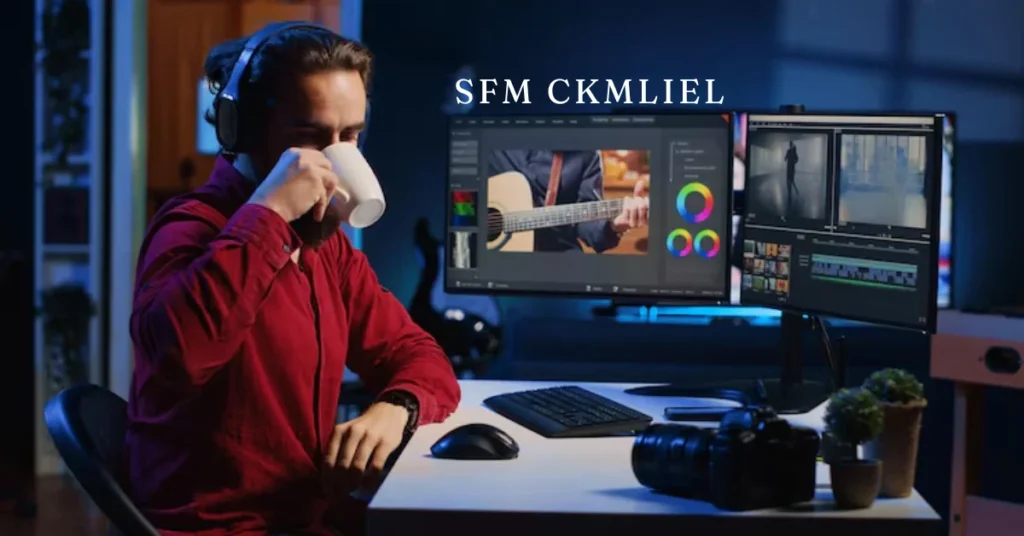Introduction
Why Compilation Matters in SFM
Let’s be honest—Source Filmmaker (SFM) is a powerful beast, but it only roars when you feed it the right assets. And feeding it right means compiling assets properly. That’s where SFM CKMLIEL (a stylized short for “Compile”) comes into play. Without proper compilation, models don’t behave, textures glitch out, and animations fall flat. Whether you’re animating for fun, film, or fandom—compiling is a non-negotiable skill.
Who This Guide Is For
This one’s for the storytellers, the 3D tinkerers, the SFM YouTubers, and modders. If you’ve ever wondered why your imported model looks like a Picasso painting gone wrong, or why your textures disappear into the void—this guide is your fix.
What Is SFM CKMLIEL (Compile)?
The Purpose of Compiling in SFM
SFM CKMLIEL isn’t just a random tech buzzword. It’s the entire backbone of Source Filmmaker’s asset processing system. It takes your raw files—models, textures, animations—and turns them into optimized formats (.MDL, .VCD) that SFM actually understands and runs smoothly.
How Compilation Powers Performance and Quality
It’s like prepping ingredients for a gourmet meal. You don’t throw raw carrots into a cake. You prep, mix, bake. Compilation ensures your assets are light, fast, and functional—resulting in faster load times and fewer crashes. And trust me, that’s gold when you’re in crunch mode.
Core Components of the Compilation Process
Models – .FBX and .DMX Basics
Models are the visual skeletons of your animation. You typically start with formats like .FBX or .DMX, export them from Blender, Maya, or 3DS Max, and then compile them into .MDL files—the magic format SFM loves.
Animations – From Timeline to .VCD
Animations are exported as .DMX files with rigging and keyframes baked in. The .VCD file (Voice Choreography Data) is the end product that SFM uses for lip-syncing and motion control.
Textures and Materials
SFM uses VMT (Valve Material Type) and VTF (Valve Texture Format) for materials. Textures need to be compiled and mapped correctly; otherwise, hello pink and black checkerboards.
Tools You Need to Get Started
Source Filmmaker (SFM) Setup
Download the latest version of SFM and get comfortable with its user interface. It’s not as friendly as Blender but way more focused for storytelling.
Third-Party Tools Like Crowbar
Crowbar is a must-have GUI for compiling models into .MDL format. It simplifies the command-line chaos into button-click bliss.
File Preparation in Blender or Maya
Before you even touch SFM, make sure your models are UV-unwrapped, rigged, and exported properly. A good export is half the battle won.
Step-by-Step SFM Compile Workflow
Step 1: Prepare and Export Assets
Model in your 3D software of choice. Check for clean topology, proper rigging, and good UV mapping. Export to .FBX or .DMX.
Step 2: Configure Compilation Settings
Use Crowbar or similar tools to input texture paths, define physics meshes, and set parameters like bone hierarchy and LODs.
Step 3: Compile and Debug
Click compile. Then wait. Then watch for red flags—missing textures, incorrect bone weights, or broken geometry.
Step 4: Import into SFM and Test
Drag and drop your .MDL files into SFM. Load them into a test scene and see how they behave. Rotate, animate, poke them—make sure they work.
Advanced Compilation Strategies
Batch Processing for Large Projects
If you’ve got a whole cast of characters or a massive environment, use batch scripts to compile everything at once. Saves hours.
Version Control for Smooth Collaboration
Using Git or other version tracking helps avoid overwriting working files. Especially useful for team projects.
Using Templates for Consistency
Create config templates (.QC files) that you can reuse. It ensures that your compile settings are consistent across assets.
Performance Optimization Tips
LOD Management (Level of Detail)
Use different mesh resolutions for near and far camera shots. This speeds up rendering and keeps your project light.
Reducing Render Times Without Sacrificing Quality
Simplify shaders, compress textures, and eliminate unnecessary bones or meshes in the background.
Troubleshooting Common Compile Issues
Missing Textures or Materials
Check your material paths. SFM is picky, and one wrong directory reference can break everything.
Broken Rigs and Animation Errors
Often caused by exporting issues. Double-check bone names and hierarchy before compiling.
SFM Not Recognizing Compiled Files
Make sure compiled files are placed in the correct SFM directory. Don’t forget to restart SFM after compiling.
SFM Community Resources
Where to Get Help
Reddit’s r/SFM, Discord channels, and YouTube tutorials are your best friends. Don’t be afraid to ask—everyone started somewhere.
Sharing Compiled Assets
Once your asset is golden, consider sharing it with the community through the Workshop or private forums. Giving back is good karma.
Future of SFM Compile
What’s Coming Next
Valve might not be dropping updates every week, but the modding community is always innovating. Expect better tools and automation plugins.
Innovations to Watch
Watch for AI-assisted rigging and one-click compile solutions on the horizon. It’s about to get even easier to animate like a pro.
Conclusion
So there you have it—SFM CKMLIEL isn’t just tech jargon. It’s the real-deal process behind making your animations look polished, perform smoothly, and tell compelling stories. From setting up assets in Blender to fine-tuning them in SFM, mastering the compile process puts you on the path to professional-grade filmmaking. Whether you’re animating a machinima short or modding a game, the SFM compile workflow is your secret weapon.
FAQs
What file types are best for SFM Compile?
FBX and .DMX are your go-to formats. They maintain rig data and animation integrity.
How do I reduce compile errors?
Keep your files clean, name your bones properly, and follow export guidelines for your 3D tool.
Can I use SFM Compile on a low-end PC?
Yes, but expect longer compile and render times. Optimize your assets to avoid lag.
What’s the difference between DMX and FBX?
DMX is Valve’s format and retains more metadata. FBX is universal but may drop some custom rig data.
How long does compiling typically take?
Anywhere from a few seconds to several minutes—depends on model complexity and system specs.






